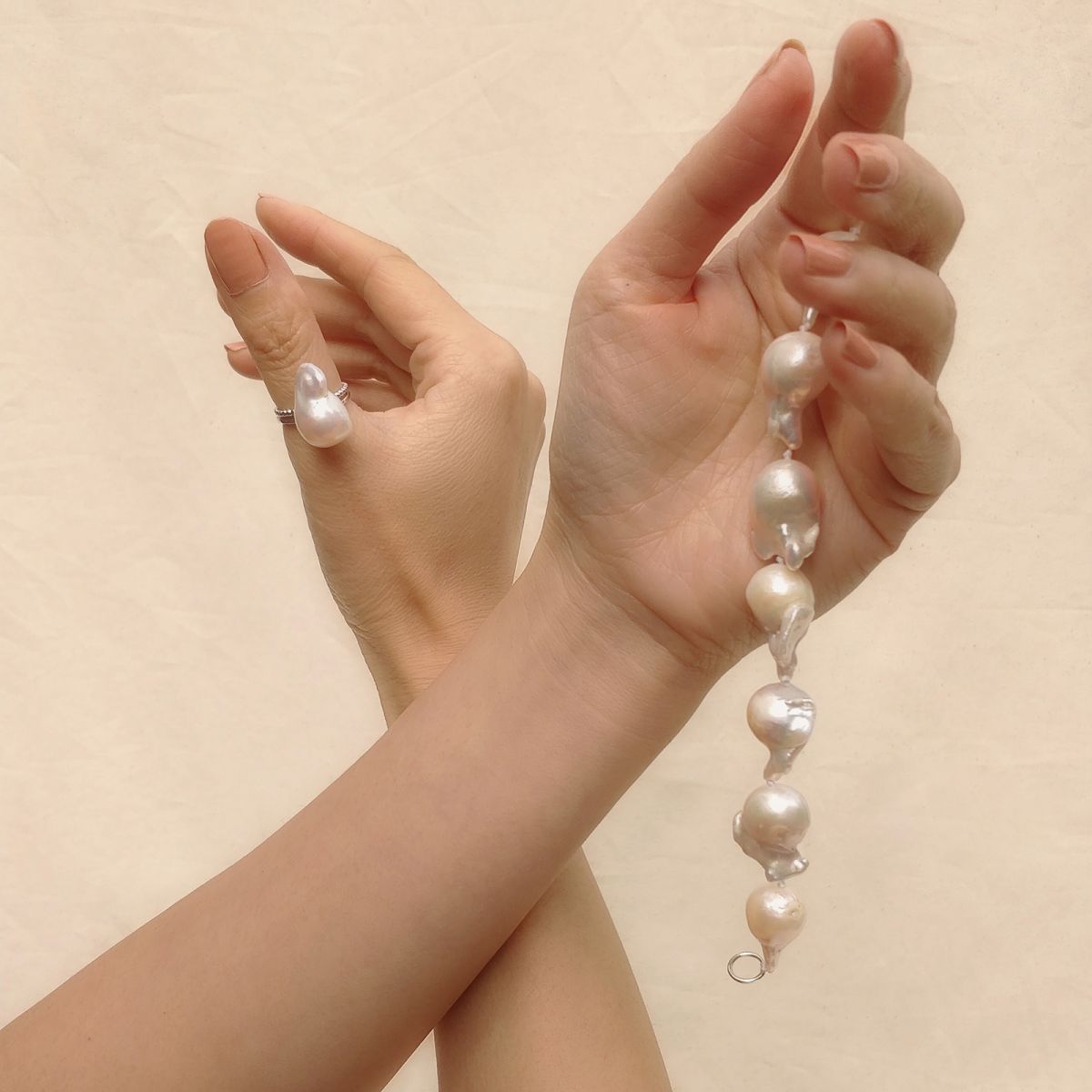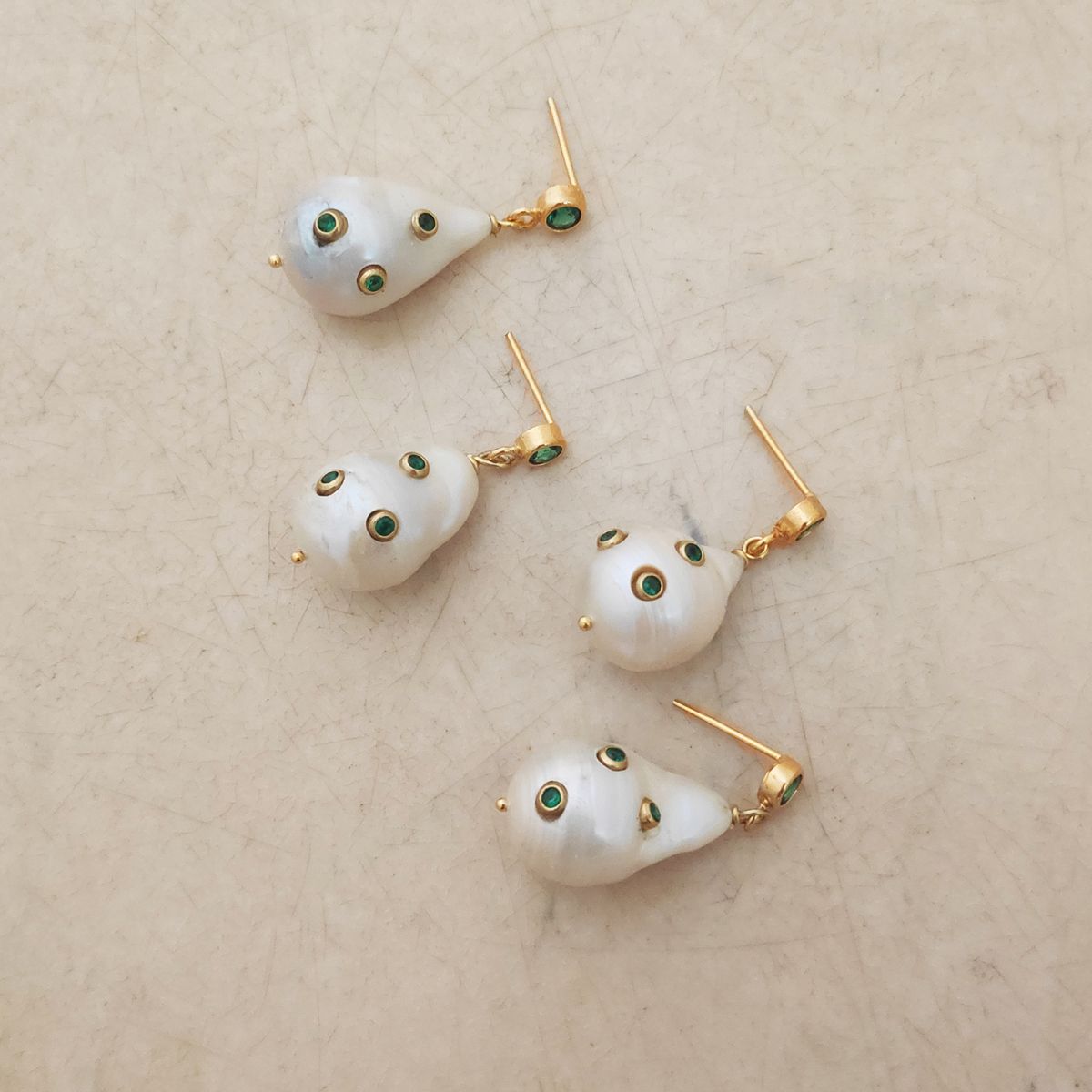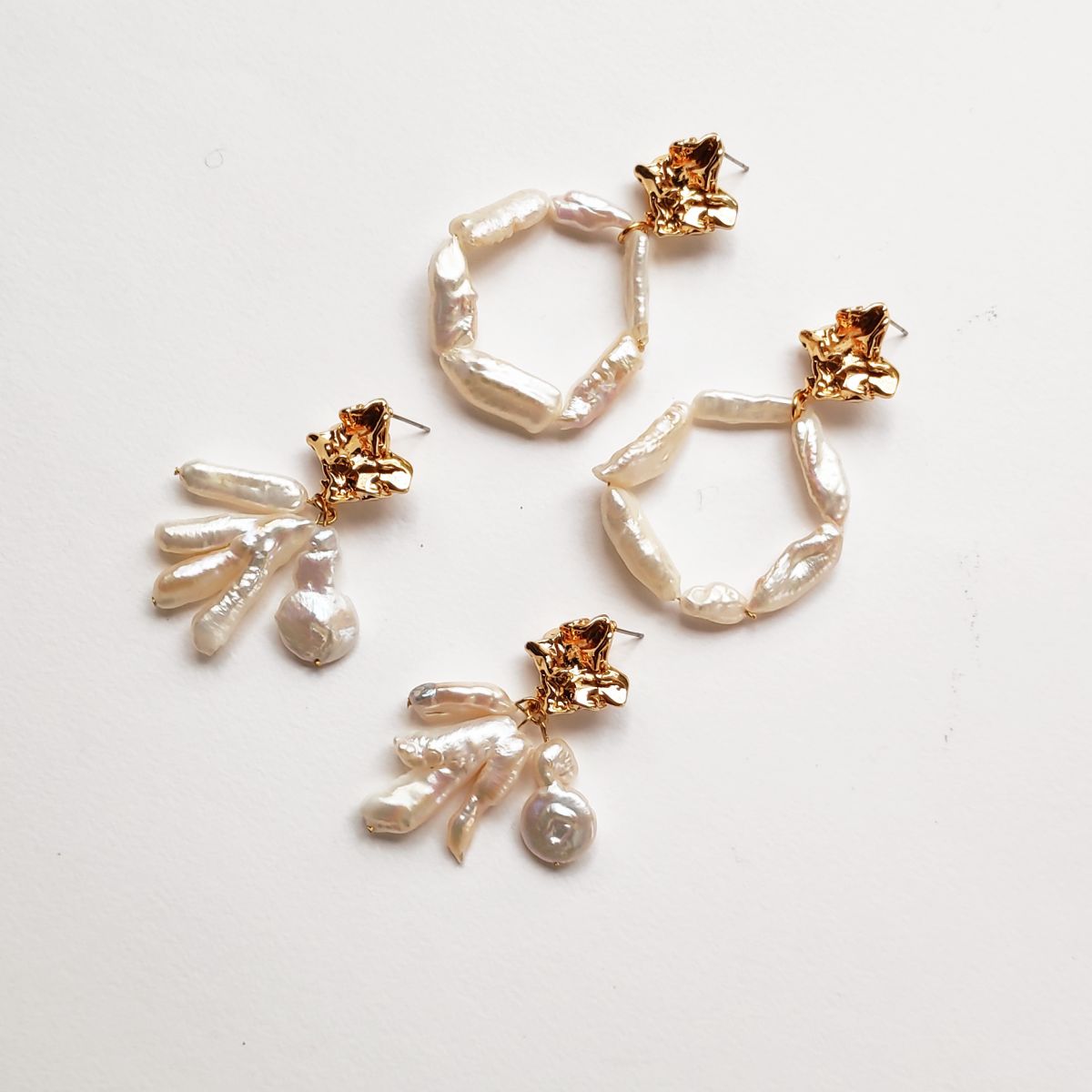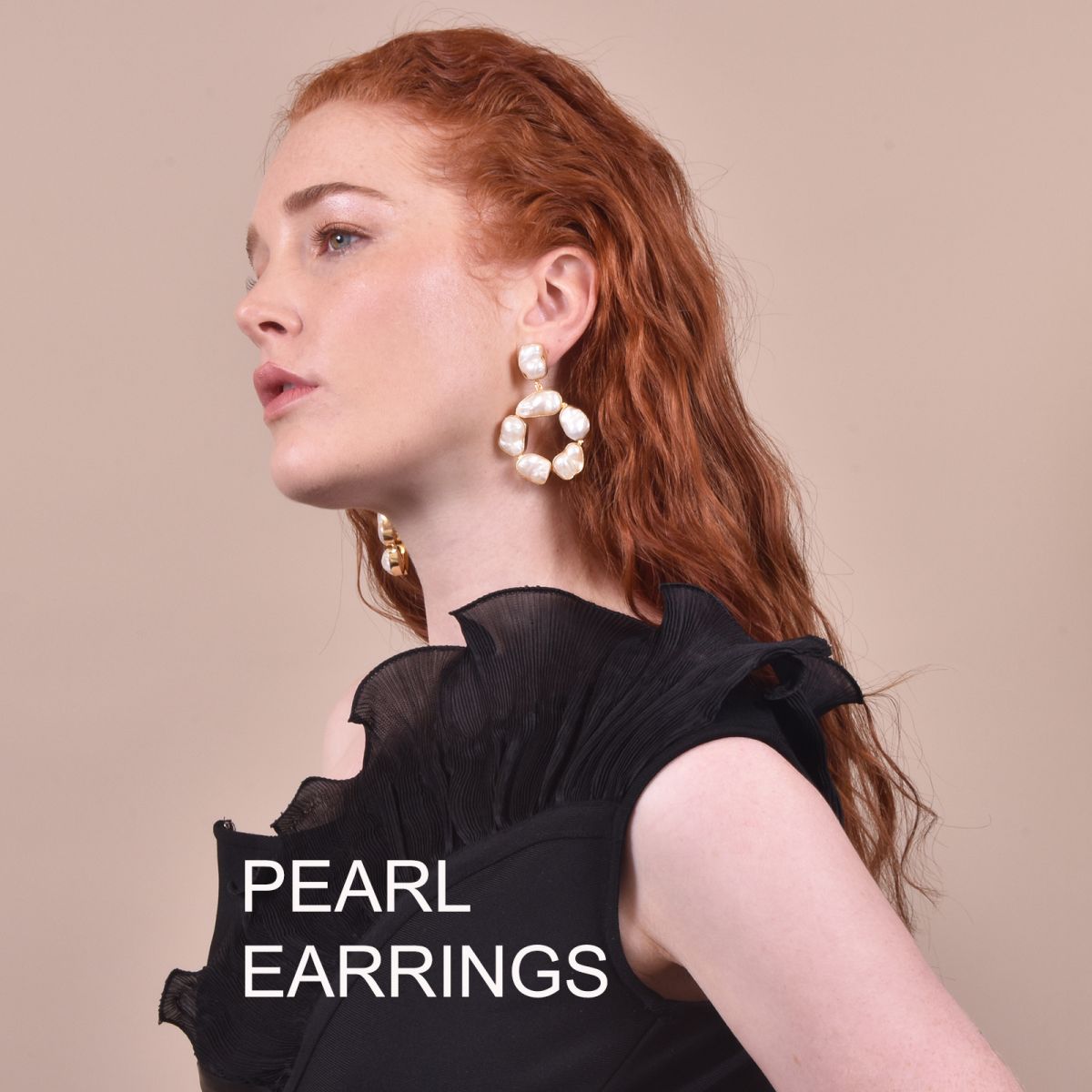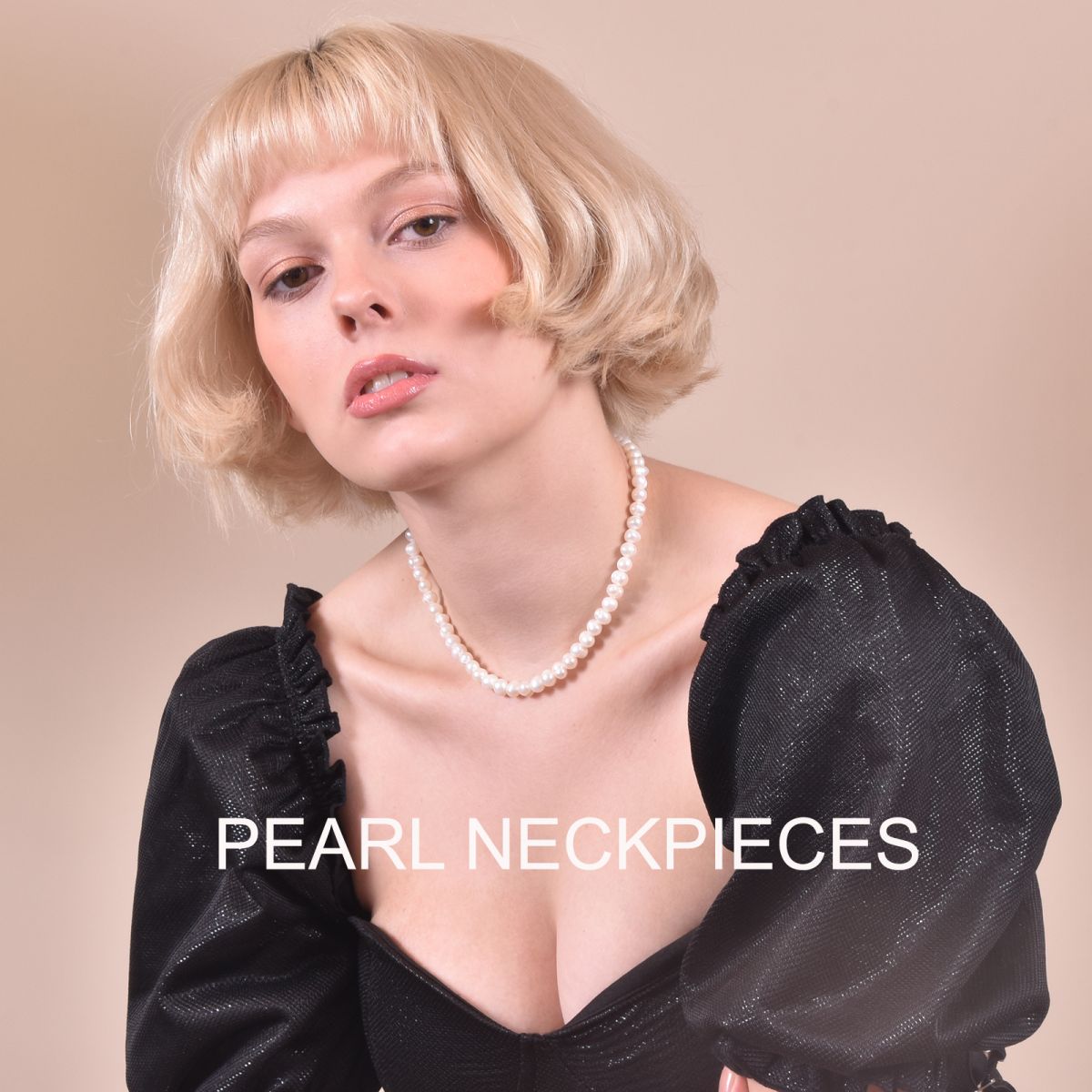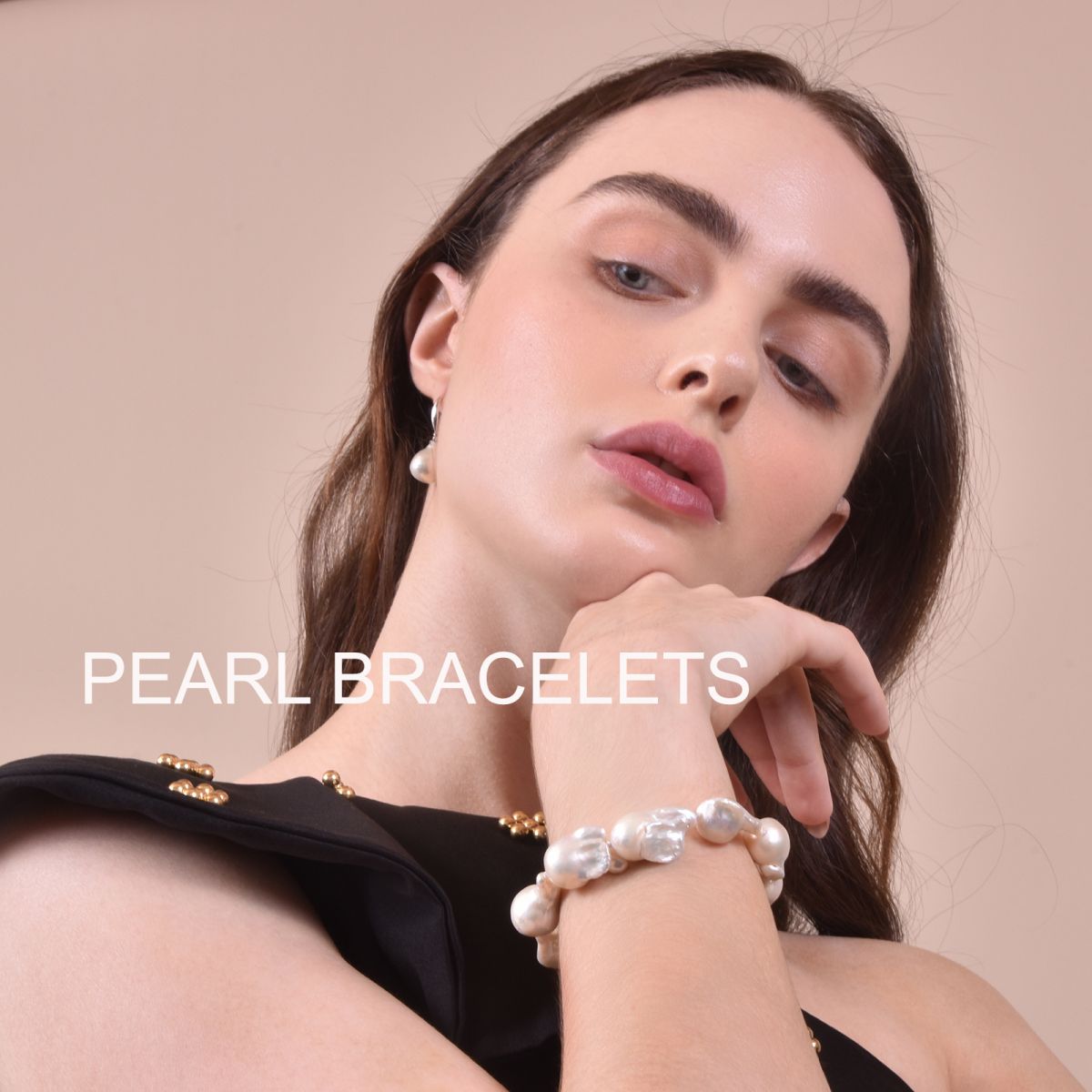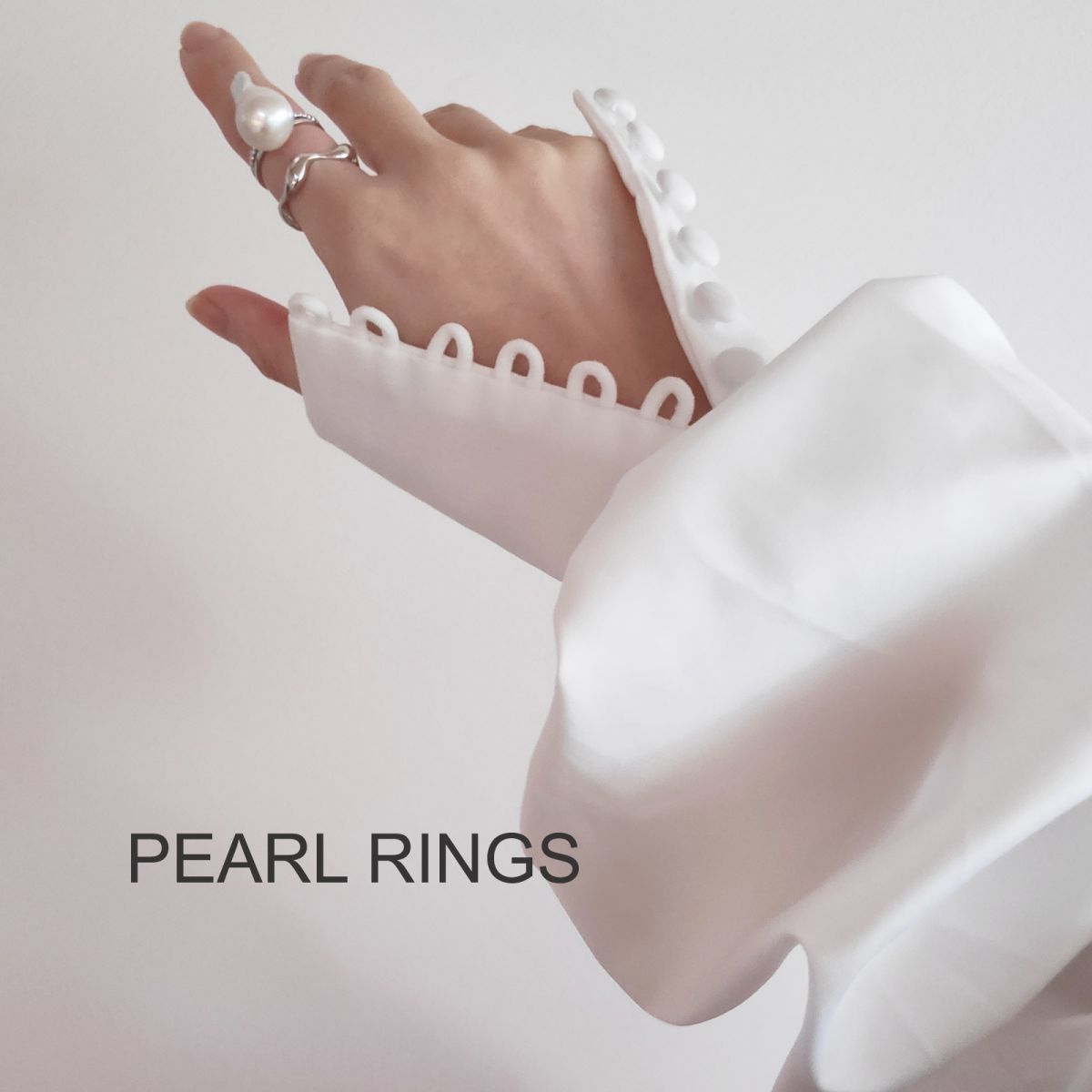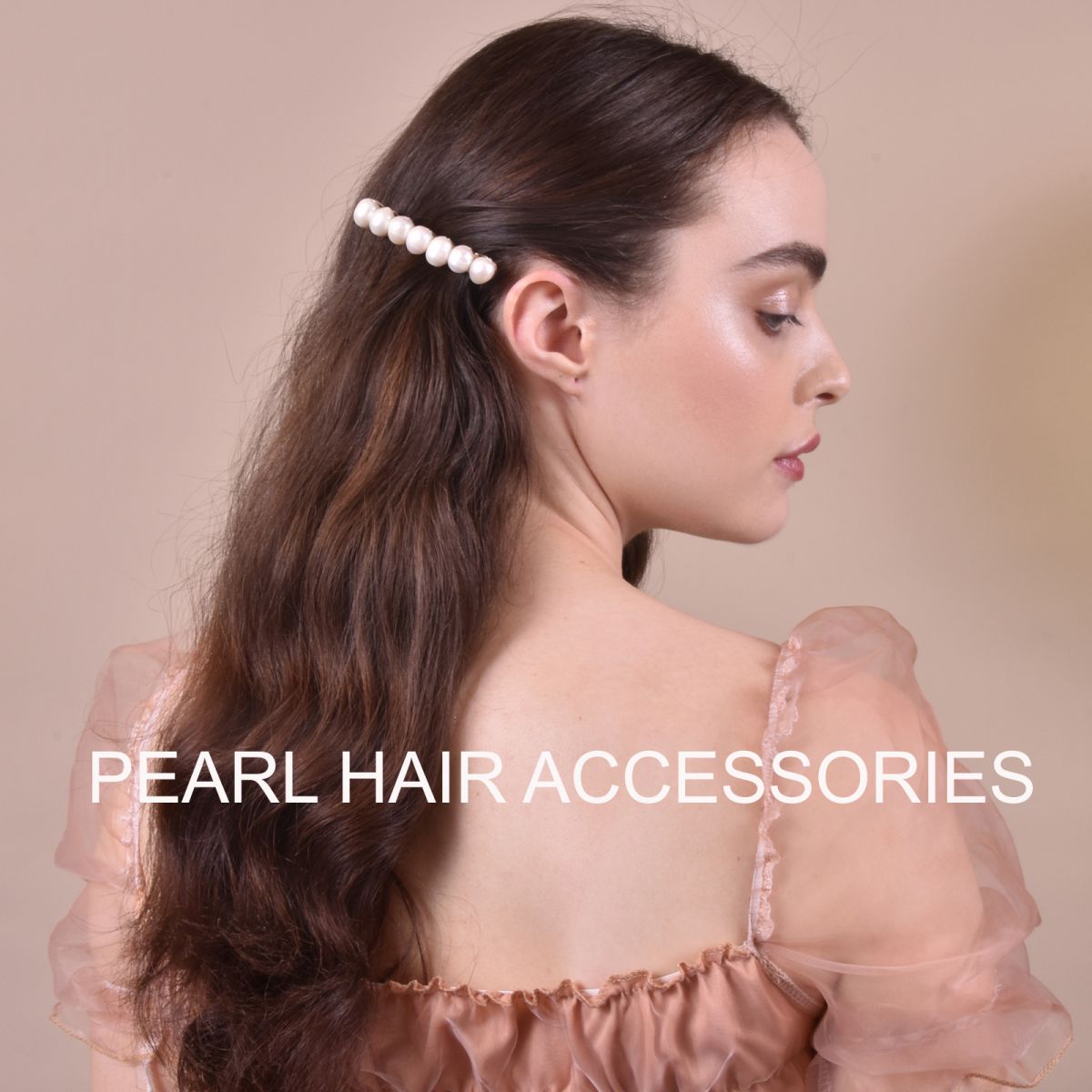Your Complete Pearl Guide
Date Posted:12 September 2020
Pearls are always appropriate and perhaps one of the best-loved gems of all time. As one of nature’s most fascinating and desired works of art, a pearl starts out as a tiny bead within an oyster or mollusk, around which many layers then form. Pearls acquire their beauty and lustre only through the passage of time, which is why they have become a legendary symbol of wisdom and beauty. Pearls come in an astonishing array of colours and shapes and are one of the most classic gems for jewellery making.
In this article, we’d like to share with you:
- The most common types of pearls (by make, by water, by shape)
- How to choose pearls best suited to your needs and to compliment your style
Natural Pearls v Cultured Pearls - By Make
There are two main types of pearls by ‘make’ – natural and cultured.
Natural pearls refers to pearls that form in oysters or molluscs naturally, when an irritant finds its way into the creature. The animal then secretes layer after layer of nacre to combat the irritant, which is how the pearl gradually forms. This is a time consuming and slow process that can take many years.
Cultured pearls, on the other hand, refer to pearls that are acquired through farming and harvesting processes. Here, ‘farmers’ raise the oysters or molluscs in pearl farms, in conditions similar to nature. The main difference is that the irritant, or pearl nucleus, is carefully embedded into the creature by humans and then the oyster is left to do its work. As in nature, the creature will coat the nucleus with nacre, creating a beautiful pearl.
Most of the pearls on the market today are cultured pearls which are more affordable and abundant. Natural pearls are extremely rare and very expensive, putting them beyond the reach of most consumers.
Freshwater Pearls v Saltwater Peals - By Water
There are two main types of pearls by ‘water’ – freshwater and saltwater.
Saltwater pearls are formed in oysters in oceans and are popularly harvested in regions such as Australia, Tahiti, Thailand and Indonesia. Saltwater pearls take longer to form, but have better lustre and are of higher quality than freshwater pearls. However they are also more expensive and can be slightly less durable.
Freshwater pearls are grown in molluscs in lakes and rivers, commonly in China, Australia, India, USA and Japan. These take a shorter period of time to form and are more abundant. Freshwater pearls are not as lustrous and generally smaller than saltwater pearls, but they are much more affordable.
Baroque Pearls v ‘Perfect Pearls’ - By Shapes
‘Perfect pearls’ refer to traditional perfectly polished and rounded pearls such as Akoya pearls, South Sea cultured pearls, and Tahitian pearls. They are beautiful and elegant pearls favoured by lots of traditional jewellers, yet in today’s view perfection can be a little boring. This is also why recent trends favour baroque pearls which are irregular in shape.
Baroque pearls are some of the most fascinating organic gems available on the jewellery market. They are the ideal choice for modern women who want to show the world just how unique they are. They are the opposite of traditional pearls because each one has its very own shape and size. This makes them extremely easy to use to create gorgeous pieces for any style.
Baroque pearls come in various shapes such as:
Flared
These pearls are elongated spheres that are asymmetrical and don’t have a smooth surface. This type of pearl was commonly used as the drop in antique Art Nouveau and Victorian lavaliers since they resemble an abstract teardrop.
Coin
Coin pearls get their name from their shape. They are rounded and flat pearls with a partially smooth surface. They have a high lustre because their large flat surface allows it to reflect a lot of light. The only freshwater pearl with a greater lustre is the Keshi pearl.
Twin
Twin pearls are two pearls that have fused. Sometimes they resemble a barbell and other times they are free formed.
Potato
Potato pearls are among the most common freshwater pearl. They are irregularly shaped but are not elongated like some of the other types. They are on a smaller scale and are more square shaped with random lumps throughout.
Cross
This is a very special type of baroque pearl. The specimens from this category come in the shape of a cross, which makes them ideal for jewelry pieces with religious notes. They are true wonders of the natural world.
Stick
Stick pearls are also known as BIWA pearls. BIWA pearls are named after the mussels that create them in Lake Biwa, Japan. These pearls are generally flat, elongated, and narrow much like a stick. They are usually drilled down the narrow vertical centre of the pearl, but sometimes you can find them top drilled.
Rice
Small rice pearls are the most like a classic pearl since their shapes are more uniform. They look like grains of rice and lack a lot of the imperfections other baroque pearls have when they are small.
Egg
Egg pearls have a wide bottom and narrow top much like an egg. While most baroque pearls are drilled down the centre vertical point of the pearl, egg pearls are drilled along the horizon on the upper section of the narrow part of the pearl.
Heart
Heart pearls are a type of coin pearl that is flat and formed in the shape of a heart. They are usually drilled down the centre vertical point of the pearl.
Teardrop
Teardrop pearls are similar to egg pearls in their shape which is like a teardrop, though they are drilled down the centre of the pearl whereas the egg pearl is drilled at the top narrow section.
Leaf
Leaf pearls have a similar shape as the baroque pearl but are paper-thin with a very bumpy surface.
Keshi
Keshi pearls are the rarest of all baroque freshwater pearls. In the case of a Keshi pearl, the mollusk somehow was able to reject the particle or seed but continues to form a pearl. Because of this they don’t have a centre seed or particle and are composed of all nacre. This lack of a nucleus allows them to become very unusually shaped and have a very high lustre.
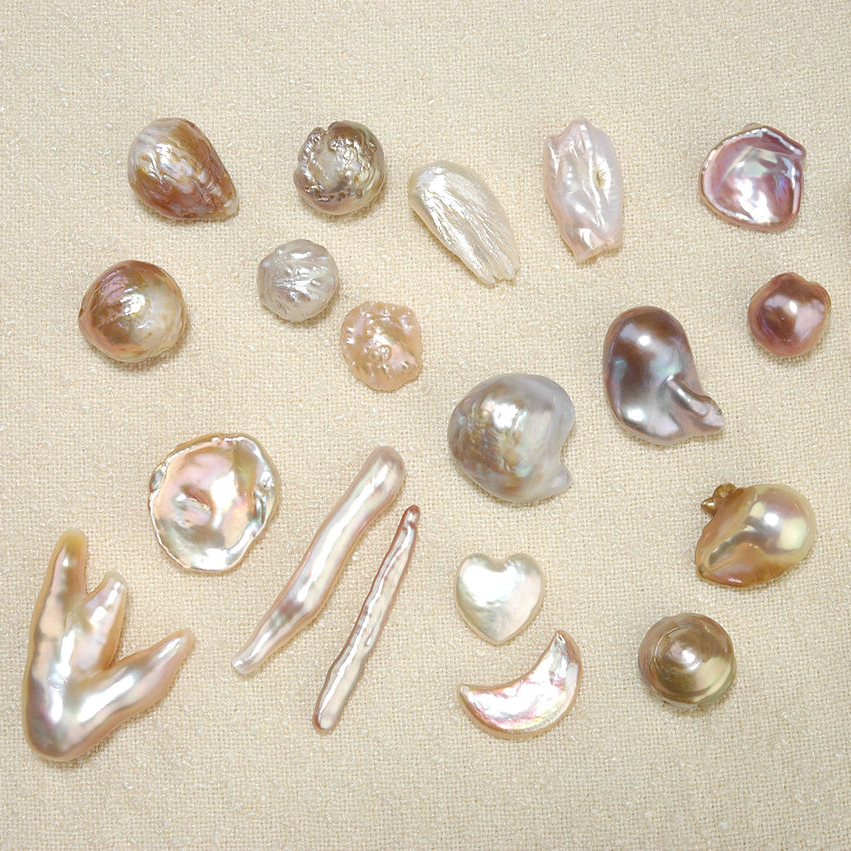
Article references:
Pearl Description
Your Guide To Different Types Of Pearls
Secrets Of Pearls
Cultured Pearl Types
Different Types Of Baroque Pearls
Baroque Pearls - The Many Pearl Shapes
What Are Baroque Pearls And Why Choose Them


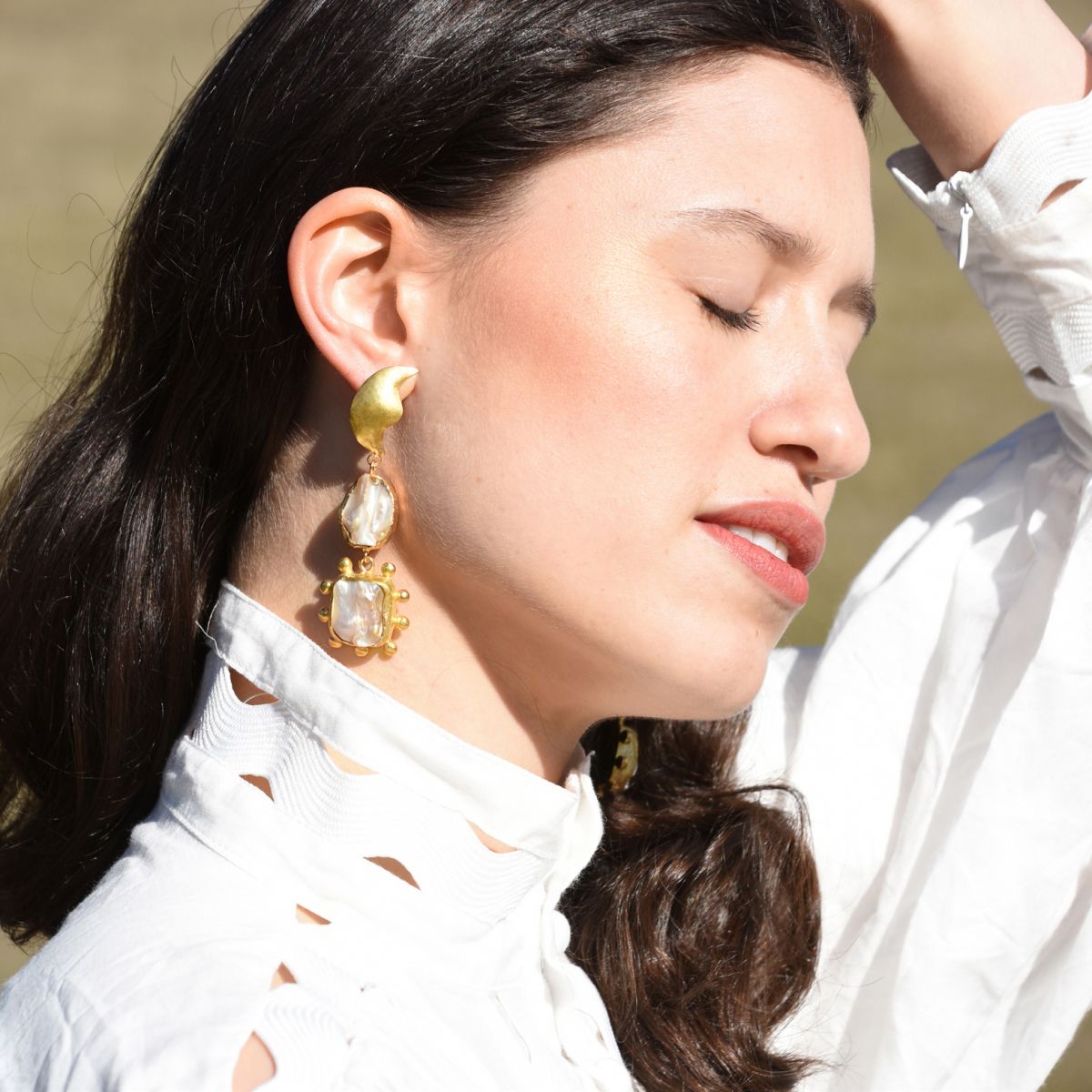
.jpg)
